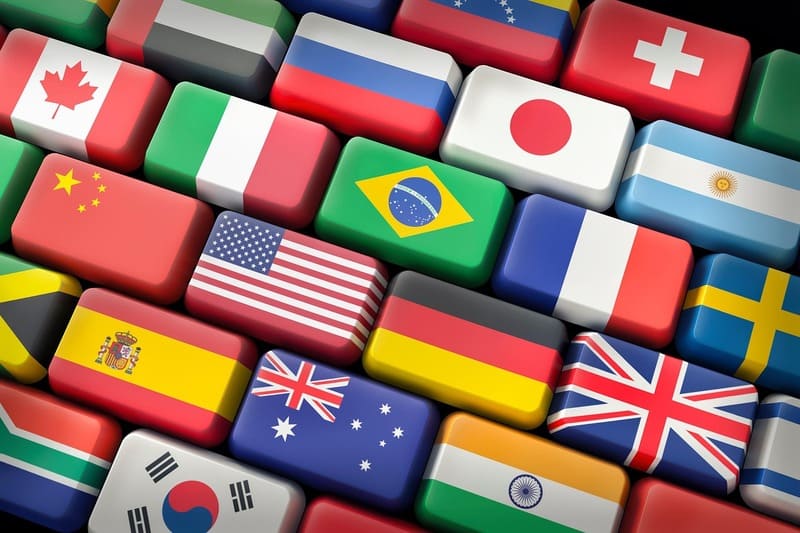Nowadays, the digital world has made every aspect of life borderless. This includes businesses, which are increasingly finding it easier to expand into the global market. From MSMEs to decacorn-scale enterprises, digital technology is being utilized to expand their reach.
For example, you no longer need to travel to Paris to buy luxury perfume; you can simply buy it online. However, for international businesses, this convenience also brings challenges such as language barriers, cultural differences, and local perceptions. Therefore, businesses require website localization services.
Website localization isn’t just about translating a website from one language to the target language. It also includes adapting date formats, currencies, and user interface (UI) elements. This effort can build customer trust, increase brand loyalty, and expand market penetration by making the website feel local to international visitors.
For example, suppose you have a market in Thailand. You need to localize your business website by adapting to your audience’s communication style, cultural practices, and local perceptions. Furthermore, website localization involves complying with local regulations, such as labeling or marketing materials.
Understanding Website Translation and Localization
Website translation and localization have become inevitable requirements for global businesses. Have you ever visited a website that automatically translates from one language to another? For example, the original language is Dutch, and you select the translation feature to English. Well, that’s an example of website translation. The goal is to convey information without adding any elements. This translation is faithful to the original text, linguistically accurate, and easy to understand.
Website translation and localization are the processes of adapting all aspects of a website, from language to idioms, design, and images. Furthermore, functionality is also considered to ensure relevance. For example, adjusting currency, date formats, and payment methods is necessary. This ensures the website is culturally appropriate and relevant to a specific audience. The goal is to make the website appear tailored to that market.
For example, suppose your business’s target market is India. You localize your website specifically for your Indian audience. This effort goes beyond simply conveying information; it also requires adapting the tone of your communication. This can provide a unique experience for your audience, thereby fostering trust. Through this trust, your business will gain an advantage and be able to compete with other businesses.
Key Differences Between Translation and Localization
Translation and localization go hand in hand. Localization won’t work without translation. However, relying solely on translation will result in information that has been translated into a different language. In a global business context, relying solely on translation can lead to misleading information and even violate local regulations. This is because translation fails to consider the cultural context and colloquialisms of the target audience. For example, during the translation process, a website might neglect local regulations prohibiting the explicit display of contraceptives in advertisements. Hence, it could face sanctions.
Another local perception is the use of color. The right use of color can evoke positive emotions in the audience and create a sense of cultural closeness. Colors carry different meanings across cultures. For example, in Japan, white symbolizes purity, while in some regions it represents mourning. Therefore, avoid making white the dominant color if it typically conveys happiness in your brand identity.
How Website Localization Services Work
In general, website localization services work in three stages: internationalization, translation, and localization. Here’s a more detailed explanation.
1. Internationalization
In this stage, a professional will ensure your website’s infrastructure is flexible enough to support multiple languages. The focus is on structuring the website’s code system and architecture for easy customization. For example, creating a structure that can display local date, time, or currency formats.
2. Translation
This stage involves translating the source text from one language to another, maintaining the correct and accurate context. This stage includes localization, but does not yet include cultural context. Examples include translating product descriptions, blog articles, or buttons like “list” into the local language.
3. Localization
This is the process where you adapt all website elements to the cultural context, emotional relevance, and audience experience. For example, replacing images with local faces, changing colors to reflect local culture, adapting payment systems, changing language style, and optimizing SEO with local keywords. This stage polishes the website to create a visual appeal relevant to the target country. For example, if your target market is China, you might choose the color red as a symbol of good luck, use idioms and language styles relevant to your Chinese audience, and optimize relevant keywords.
Core Elements of Effective Website Localization
Here are several steps you must go through in the website localization process.
1. Language Quality & Style Consistency
This strategy serves as a roadmap to ensure your messages and content are locally relevant while still aligning with your brand identity. When developing this strategy, you need to understand your target market country. This strategy is integral to your brand translation process.
2. Cultural Relevance & Visual Design
At this stage, visual elements, such as images, colors, and symbols, need to be culturally appropriate. This avoids misunderstandings and aligns with local values. Furthermore, UI and UX designs are personalized to suit the country’s audience.
3. SEO Localization & Keyword Research
After designing the pages, the next stage is local SEO optimization. This involves creating content relevant to the target country, using local keywords, and adjusting meta tags.
4. Technical Optimization
This aspect is crucial in the localization process. It ensures the website is functional and accepted in the local market. This stage includes changing the date and time format, currency, payment method options, and compliance with the country’s regulations and laws.
5. Testing & Continuous Update
Test each element thoroughly to ensure it functions correctly. This also helps to avoid technical and translation errors.
The Business Impact of Website Localization
Website localization isn’t just about translating languages; it’s about creating a user experience that feels intimate, culturally relevant, and emotional for the audience. Another advantage for companies in global business practices is that they can compete more effectively. When your company is competitive, it will play a role in driving sustainable global economic growth. Furthermore, your business can excel and be stronger than others.
For a more complete explanation, here are the benefits of localization for your business.
1. Higher conversion rate
Localization can increase the likelihood of your audience making a purchase or taking a desired action. According to data from CSA Research, 65% of consumers will prefer content in a brand’s own language, even if it’s not perfect. This is because consumers tend to trust transactions in a language and format they understand.
2. Stronger brand trust
Communication style, cultural relevance, and emotions can increase audience trust in your brand. Furthermore, they’ll perceive your content as authentic when you use humor that resonates with them.
3. Improved international SEO
Using local keywords and meta tags in the local language, along with a suitable domain, will make it easier for local search engines to find you. For example, if your target market is South Korea, you need to adjust your keywords to be readable by Naver’s search engine.
4. Customer retention in multiple markets
Customers will return more frequently to sites that are easy for them to understand and meet local expectations. Therefore, companies can maintain a stable customer base.
Choosing the Right Website Localization Partner
When choosing website localization services, you need to consider several criteria. This ensures your content is not simply translated, but also adapted emotionally, culturally, and perceptually to suit your audience. Therefore, here are some considerations:
1. Expertise
Choose an agency with professional translators who are experts in their field. At SpeeQual, we have a team of translators with over 10 language pairs. You can consult with us about your target language to localize your website.
2. Experience
Look for verifiable evidence of success, such as reviews or case studies. Then, see if other companies similar to yours have worked with them. For over 27 years, SpeeQual has been trusted by a diverse range of clients, from technology to automotive.
3. Use technology
At SpeeQual, we use CAT tools in the translation process to ensure speed, precision, and consistent terminology.
4. Have a strict QA system
In addition to a reliable translation process, ensure your translation partner implements strict QA. SpeeQual implements a strict QA system to ensure the quality of localization results. We utilize machine-assisted QA using checking tools.
5. Support smooth communication
Communication is crucial in the localization process to avoid ambiguity in the translation.
Future Trends in Website Translation and Localization
In the future, the use of Artificial Intelligence (AI) will become integral to the translation and localization process. As time progresses, work will be increasingly facilitated by AI. For example, to increase translation accuracy, translators use AI. Besides being accurate, it also saves time. Initially, the use of AI was feared because it could replace human work. However, we as humans can choose to collaborate and utilize it wisely.
One of the AIs we already use at SpeeQual is CAT. This technology enables translators to work more efficiently and deliver the best results for clients. CAT is also integrated with specialized terminology management, eliminating the need for manual creation.
Furthermore, we utilize Machine Translation Post Editing (MTPE) to refine translations to suit your business needs. This technology combines cutting-edge AI with human linguistic expertise. Through this AI technology, we can ensure your message is conveyed accurately, professionally, and culturally relevant.
Conclusion: Be Relevant to Your Global Market
The development of the digital world has made it easier to conduct business across borders. No longer is it necessary to sail the Silk Road like businesspeople did hundreds of years ago. Businesses are increasingly utilizing digital technology in their global operations. However, these efforts will be unsuccessful without translating and localizing their websites.
In the midst of the race to expand businesses on digital platforms, SpeeQual offers website localization services, a solution for taking your business to the next level. We don’t just translate manually, but utilize AI technologies like CAT and MTPE to ensure a more precise translation process without compromising cultural adaptability.
Still unsure about translating and localizing your website? Consult us!





